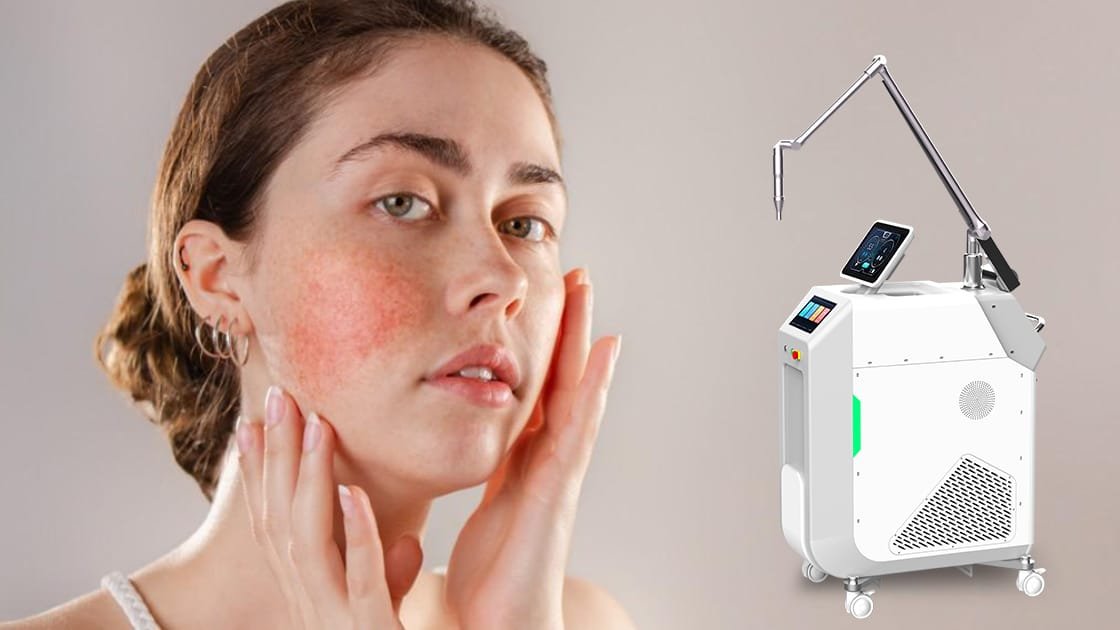Understanding Rosacea: What Causes the Flare-Ups?
Rosacea is a chronic skin condition that primarily affects the face, causing redness, visible blood vessels, and sometimes bumps or pimples. The exact cause of rosacea remains unclear, but it is believed to be linked to an overactive immune system, genetics, and environmental factors. Common triggers for rosacea flare-ups include stress, sun exposure, extreme temperatures, alcohol, spicy foods, and even certain skincare products. These triggers can cause the blood vessels in the face to dilate, resulting in the characteristic redness and irritation. Rosacea not only affects your skin but can also impact self-esteem. The redness and visible blood vessels can lead to social anxiety, making many sufferers look for effective treatments. Among these, pico laser has emerged as a promising option for rosacea, offering hope to minimize flare-ups and improve skin appearance effectively.
What Is Pico Laser Technology?
Pico laser technology is a revolutionary advancement in the world of skin treatments. Unlike traditional lasers, which use longer pulses of light, pico lasers deliver energy in extremely short bursts measured in picoseconds (trillionths of a second). This fast pulse allows the laser to work more efficiently, targeting the skin’s pigment or vessels with minimal heat damage to the surrounding tissues.
The dual pico laser offers high-precision treatment, particularly beneficial for treating conditions like rosacea. It helps to target deeper layers of the skin without causing irritation or discomfort to the surface, making it ideal for sensitive conditions such as rosacea.
How Pico Laser Helps Reduce Rosacea Symptoms
Pico laser works by using its rapid pulses to target the enlarged blood vessels and pigment that cause rosacea. By delivering energy directly to the affected areas, the laser helps to break down these vessels, causing them to shrink and reduce redness. Over time, this reduces the frequency and severity of flare-ups.
Additionally, the pico laser promotes collagen production in the skin, which helps strengthen the skin’s barrier. This enhanced skin texture and elasticity can result in smoother, more even skin tone and fewer visible blood vessels.
Unlike traditional laser treatments, pico laser offers a gentler approach with quicker recovery times, making it an excellent choice for rosacea sufferers seeking minimal downtime and maximum results.
What to Expect During the Pico Laser Treatment
The pico laser treatment for rosacea is fast, effective, and generally well-tolerated. During the session, a cooling gel is applied to the treatment area to keep the skin comfortable. The laser is then passed over the skin in short bursts, targeting the problem areas.
While some patients report a mild sensation of heat or a slight tingling, the procedure is usually painless and does not require numbing cream. Each session typically lasts between 15 and 30 minutes, depending on the size of the treatment area.
Most patients can resume their regular activities immediately after treatment, as there is little to no downtime involved. However, some mild redness or swelling may occur, which typically resolves within a few hours.
Results and Aftercare: Maintaining Clear, Calm Skin
Following pico laser treatment, many patients notice a significant reduction in redness and a more even skin tone. The treatment works gradually, with optimal results becoming visible after a few weeks as the skin heals and regenerates.
To maintain the best results, patients are advised to protect their skin from the sun, as UV exposure can trigger rosacea flare-ups. Gentle skincare routines and the use of mild, non-irritating products are also recommended to keep the skin calm.
Some individuals may need multiple sessions to achieve the desired results, depending on the severity of their rosacea. A consultation with a skin care professional will help determine the ideal treatment plan for each patient’s specific needs.








